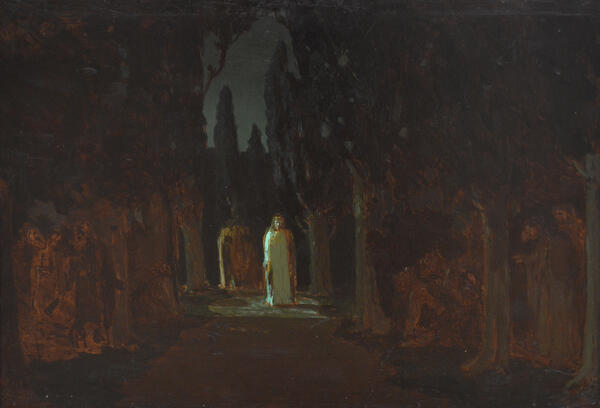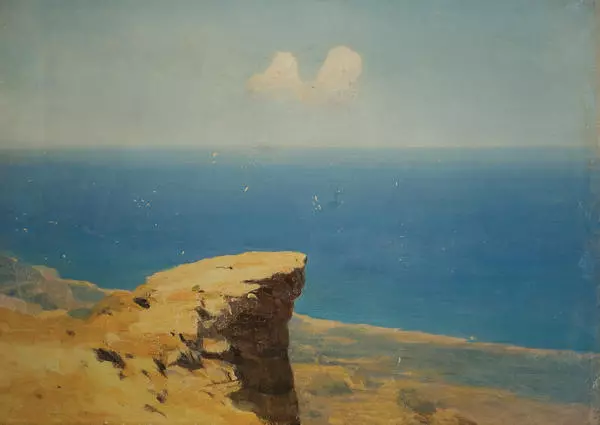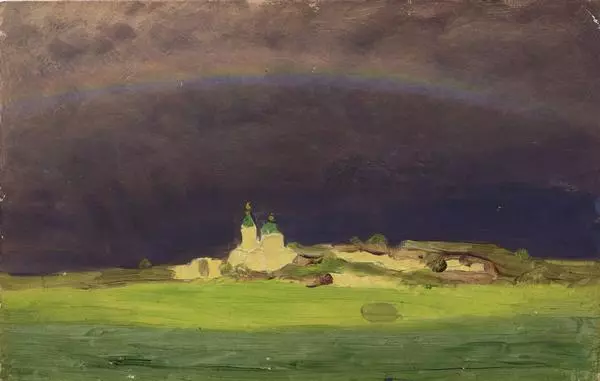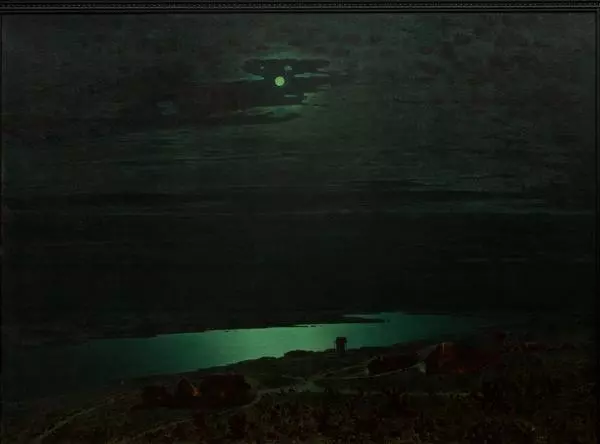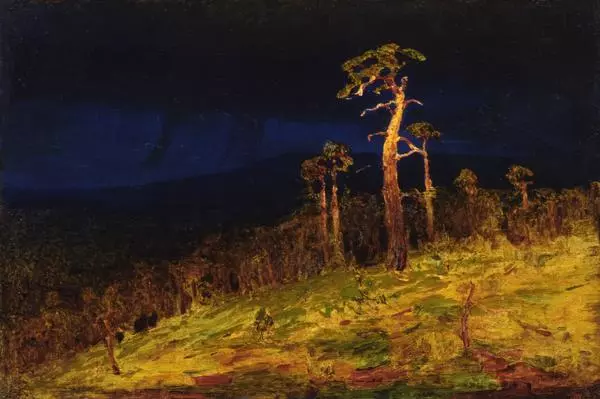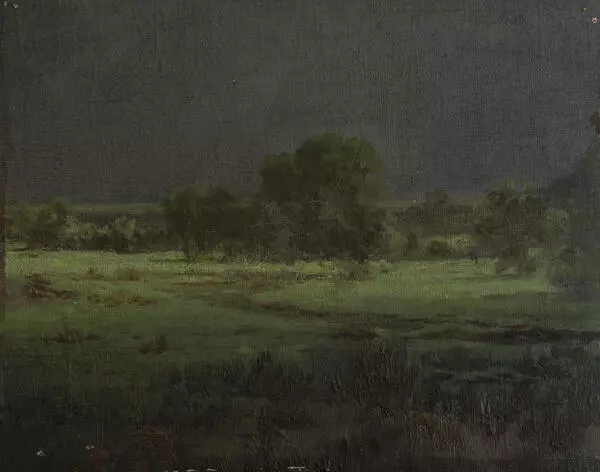Arkhip Ivanovich Kuindzhi was born into the family of a shoemaker in Mariupol. His surname came from his grandfather’s nickname which means “goldsmith” in Tatar language. Having lost his parents at an early age, Arkhip lived with his relatives and took odd jobs to make ends meet, working as an errand boy for a merchant, as a construction worker at a church, and as a retoucher at a photo studio. At the Academy of Fine Arts, he met Ilya Repin, Ivan Kramskoy, and other artists from the Society for Traveling Art Exhibitions. In 1875, he was accepted into the Society. However, its strict rules and limitations hindered his creative development, and four years later, he became an independent artist.
Arkhip Kuindzhi became famous for the spectacular lighting effects in his landscapes. During his lifetime, there were already rumors about the secret behind his artistic method and magical light, with people suggesting that the artist used light bulbs behind the canvases or special additives in his paints. This effect can also be seen in Kuindzhi’s painting “Christ in the Garden of Gethsemane”, which is one of his rare theme-based paintings and the only reference to the Gospels. The original painting is now kept in the Vorontsov Palace in Alupka, and the one from the National Gallery of the Komi Republic is a study.
“Again, a second time, He went away and prayed,
saying, ‘O My Father, if this cup cannot pass away from Me unless I drink it,
Your will be done.’ And He came and found them asleep again, for their eyes
were heavy. So He left them, went away again, and prayed the third time, saying
the same words. Then He came to His disciples and said to them, ‘Are you still
sleeping and resting? Behold, the hour is at hand, and the Son of Man is being
betrayed into the hands of sinners. Rise, let us be going. See, My betrayer is
at hand.’” This episode from the Bible tells the story of how Jesus went to the
Garden of Gethsemane after the Last Supper with three of his disciples. He went
deep into the garden to pray and prepare himself for his martyr’s death. In
this painting, Arkhip Kuindzhi highlighted the dramatic nature of this event,
with the moonlight marking the boundary between good and evil in a symbolic
manner. The figure of Christ, illuminated by the moonlight, stands in stark
contrast to the deep darkness of the garden around him, with the guards hiding
among the trees, ready to arrest him.

